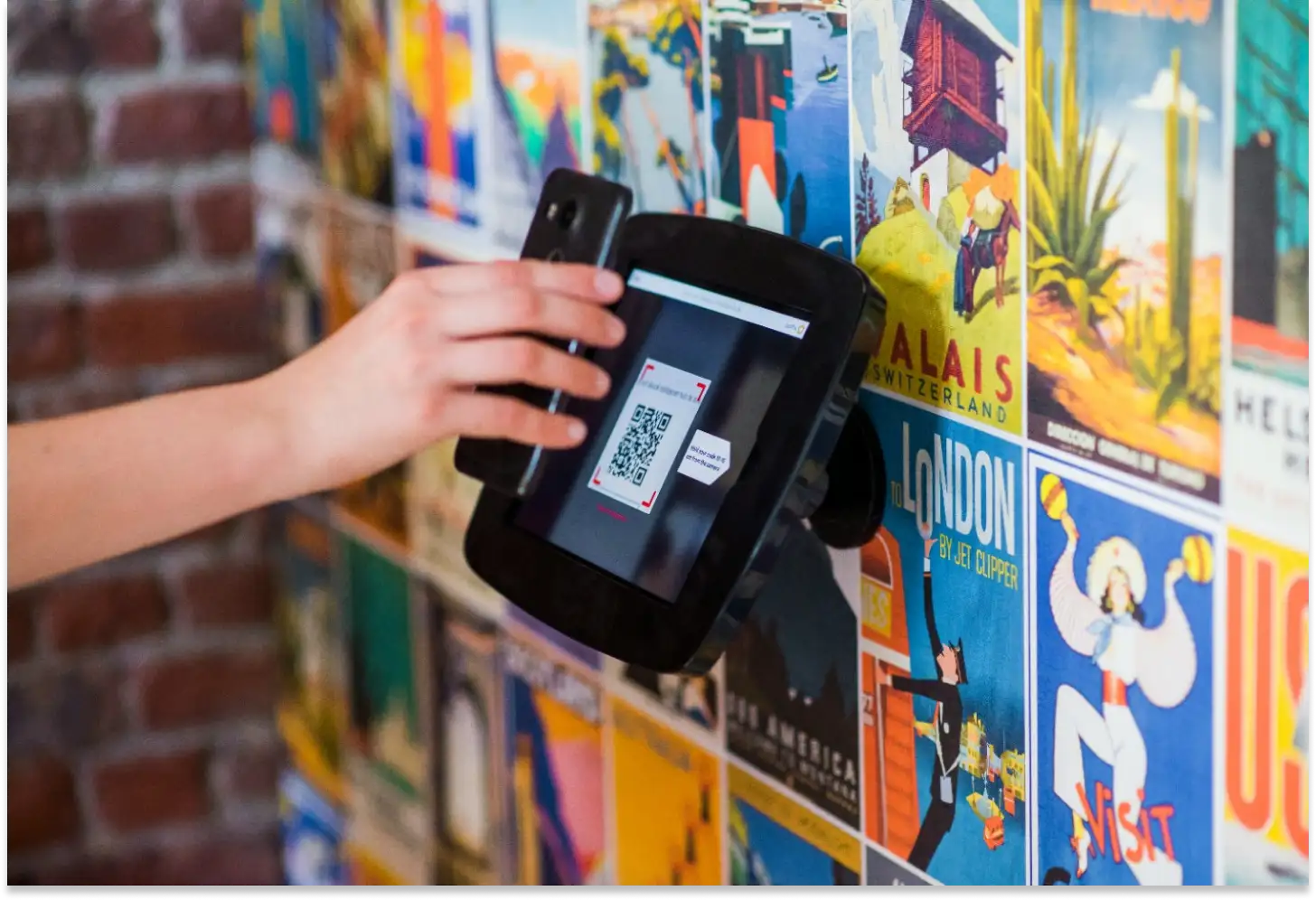This just-in, self service kiosks are all the hype!
Integrating simple tech devices, some of your favorite kiosks are now completely eliminating the need for human interaction.
The next time you get a coffee, you might not have to go through long queues, disrupt your regular music playlist, place an order with a barista, and make sure they get it exactly right. What a hassle! For a cup of coffee?
Multinational businesses as well as small local vendors are choosing to implement touchscreen interactive devices to replace traditional human interaction for service and queue management.
The Rise of Self Service Kiosks
Self-service is not just limited to ATMs and gas stations, you can now get access to just about any kind of service, including checking into a hotel and printing boarding passes for a flight.
This digitalization builds a personalized consumer experience
According to a study by Gitnux, nearly 73% of customers prefer using self service kiosks over interacting with a human associate, citing convenience and speed as the primary reasons.
Benefits of self service kiosks
Reducing wait times
In 2024, people are increasingly looking for instant gratification when it comes to consumer experience. This kind of reduced tolerance for wait time is prevalent in modern society, given the rise of social media platforms and technology.
When it comes to wait times in queues, consumers have little to no patience. Consecutively, transaction speeds have a great impact on customer satisfaction. Involving self-checkout systems eliminates the long wait time.
Improving employee productivity
Business staff has to pay attention to various areas of service such as quality control, employee management, work environment, and customer interaction.
Using kiosks on the floor eliminates the time spent on unproductive tasks that do not require human insight. Tasks like that of a cashier can be completely automated digitally.
Enhancing consumer experience
Rather than just speeding up the process, digital platforms also enhance the consumer experience. Self-service content can be tailored to each individual customer or even group of customers based on profiles and feedback.
Customers can be classified based on location, language, device, product, or purchase history to make every transaction a customized experience.
Systems can also adapt based on customer input like feedback, comments, queries, or chat messages. Through time and repeated transactions, the consumer experience can become more personalized.
Increase in sales
Interestingly, self-service systems can increase sales by translating to larger orders. Highly interactive AI systems are often programmed to up-sell and market their products even better than humans.
The drawbacks faced by employees like personal biases, ineffective sales strategies, inadequate talent, etc., are bypassed with the use of digital means instead.
Moreover, by eliminating manual labor like cashiers, businesses can save substantially in labor costs. The attention can then be directed toward more pressing areas like consumer assistance.
Greater privacy and data security
Behind the screens of every self-service system, there exists a significant amount of sensitive data, including profile information, phone numbers, email, purchase history, banking details, addresses, etc. Protection of this data is vital. Enabling self-service systems can offer customers the utmost privacy.
Implementation of secure authentication for access control, for instance, two-step authentication, protects data within management portals.
Using secure network connections and ensuring the business is connected to a trusted and protected network eliminates data breach risks.
Most digital systems employed by businesses encrypt all sensitive data transmitted to safeguard from unauthorized access.
Popular kiosks
The self service kiosk market is spread across various industries, including banking, financial services, insurance, transportation, hospitality, entertainment, health care, and, most commonly, retail stores.
Wavetec Banking offers a range of services, including account opening, check deposits, and cash dispensing. The Bank of America has also opened self-service systems across its branches to allow digital account management.
You can also find self service ticketing kiosks at train stations, bus terminals, and ferry terminals to purchase tickets, choose seating preferences, and check schedules.
Although not quite established yet, self-service at the cinemas is being debated to be a beneficial idea. Maybe the next time you go to watch a movie, there won’t be a traditional ticket counter!
Mcdonalds remains the world’s largest deployer of self-service kiosks with over 130,000 units installed. By 2023 the total no. of restaurant kiosks had increased by 43%.
Apart from that, KFC, CVs, and many more brands have already established hundreds of thousands of kiosks across the world signaling a significant change in the way we experience transactions.
Closing thoughts on Self Service Kiosks
While it might seem like the idea of self-service may replace human jobs, on further examination, it proves otherwise. Simply put, the adaptation of technology frees up employee’s time and energy for other tasks.
For instance, in a typical food service restaurant while the cashier and transaction tasks are taken up digitally, the kitchen management, maintenance of the dining area, inventory, etc. can be handled by employees.
2024 is witnessing a remarkable change in the way we operate, thanks to the rapid advancement of technology. Implementing and adopting this technology and researching improvements are important.
Businesses that are hesitant to employ technology in their operational systems risk falling behind and losing time and capital.
As the 21st century moves forward, let’s embrace the change and what it has to offer!



